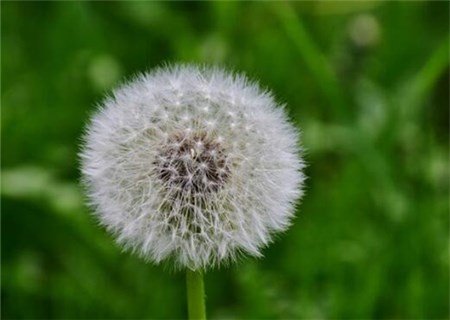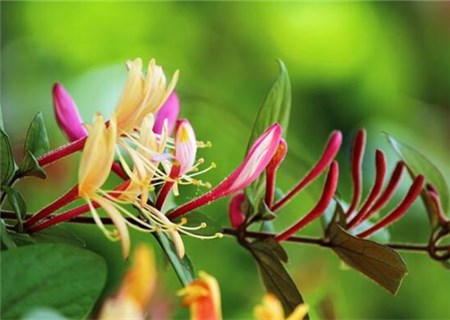What are the planting methods of oil peony? How to manage in the field? What are their uses?
Oil peony refers to the variety type of peony with high seed yield, high oil content and high effective components. Peony belongs to Paeoniaceae, Paeoniae and Paeoniae, which has a wide range of uses and good economic benefits. So do you know what are the planting methods of oil peony? How to manage in the field? What is the use of it?

What are the planting methods of oil peony
1. Land selection
The cultivation land of oil peony should choose the neutral plot with deep and fertile soil layer, loose air permeability and good drainage (pH6.5-7.5). The soil quality is better in sandy loam, and the land with heavy texture, saline-alkali, low-lying and continuous cropping is not suitable for planting.
The land should be ploughed and turned one month in advance, with a depth of about 20-30cm. Promote soil ripening by exposure to the sun and kill bacteria and eggs. Before ploughing, mature organic fertilizer 1000kg or peony special fertilizer 500kg were applied per mu.
2. Seedling treatment
Choose more than 2-3 years old high-quality strong seedlings to plant. Usually cut off the diseased root and residual root before planting, after unifying the seedling specification, soak the whole plant with 50% thiram 800x solution or 50% carbendazim 800x solution for 10-15 minutes.
3. Timely planting
The planting time of oil peony in the field is more strict, it is better to be planted in the north from September to October, and it can be postponed to November in the south of the Yangtze River. Transplanting too early, because the temperature is on the high side, the survival rate of transplanted seedlings is low; transplanting too late, it is difficult to form new roots that year, and the growth is weak in the coming year.
4. Reasonable density
Under the dynamic management of planting density of oil peony, it is generally about 3000 trees / mu when planting, and the row spacing of 30cm × 80cm or 40cm × (90050) cm is wide and narrow. We can also choose the high density cultivation of 20cm × 60cm with row spacing, and then remove a row of peonies every 1-2 years.
5. Planting method
When planting in a large area, the tree peony planting machine was used to plant the row spacing, or the burrowing machine was used to plant according to the row spacing (25cm × 30cm). When planting, the peony seedlings were first put into the hole to stretch the root system. After filling the soil in the hole, the peony seedlings were raised to make the root neck lower than the ground 2cm or so, and then the root soil was compacted so that the root soil was closely connected, and the planting water should be irrigated after planting.
Second, how to manage the oil peony in the field
1. Spring management
In the normal year in the Central Plains, oil peony begins to sprout in mid-February, and should be poured with sprouting water in time before germination; in the first ten days of March, the plant grows vigorously, and mid-ploughing is carried out between rows, which is beneficial to the promotion of new roots; combined with mid-ploughing and soil cultivation, 200 kg of special organic fertilizer for peony and 10-15 kg of compound fertilizer are applied per mu. After the peony leaves are unfoliated from late March to early April, 0.1% 0.2% potassium dihydrogen phosphate solution can be used for foliar spraying; peony enters the full flowering stage in mid-April, and attention should be paid to rain protection and oil peony pollination. Artificial pollination can greatly provide yield.
2. Summer management
After the first ten days of May, the flowering period of peony ends, the peony fruit expands rapidly, and the peony bud begins to enter the flower bud differentiation stage; the peony seeds begin to mature gradually in mid-late July, and the key tasks in the field management points are as follows:
3. Fertilizer and water management
Adequate nutrient supply is the basis of full grain and normal flower bud differentiation of peony. To apply multi-component compound fertilizer in time, the ratio of nitrogen, phosphorus and potassium is 2:2:1, 15-20 kg per mu, and watering in time after application; and according to the growth of peony, 0.2% 0.5% potassium dihydrogen phosphate solution is sprayed on the leaves 1-2 times as appropriate.
4. Ploughing and weeding
Summer is a vigorous period for the growth of weeds, weeds not only compete with peony for water and fertilizer, but also grass famine reduces the ability of ventilation and light transmission in the field, which aggravates the harm of diseases and insect pests, weakens photosynthesis, and affects the flower bud differentiation of peony. In general, weeding should be done 3-4 times in summer, depending on the situation of weeds.
5. timely harvest: in late July, the pods began to turn yellow, and the seeds began to change from white to brown, and it was better to harvest before pod cracking and seed shedding.
What are the uses of oil peonies
In addition to collecting peony seeds to process peony oil, peony petals, peony stamens, peony leaves and peony rhizomes also have their own uses. Peony petals can be used as petal tea, extract peony dew and extract peony essential oil. Peony stamens can be used as stamens tea, peony pollen is a precious health product, peony tender leaves can be used as bud tea, and peony rhizomes can extract medicinal components. The moutan made from the root of peony has always been an important traditional Chinese medicine.
Time: 2019-03-17 Click:
- Prev

How about the perennially herbaceous dandelion planting prospects? What are the benefits of eating regularly?
Dandelion, also known as mother-in-law Ding, it grows rapidly, adaptability is also very strong, whether in the field, roadside, hillside, or grass, river beach, can grow very well, can be planted all over the country, then you know how dandelion planting prospects? What are the benefits of eating regularly? What about the planting prospects?
- Next

Can fresh honeysuckle drink in water? How do you breed? Why not blossom?
Honeysuckle, also known as honeysuckle, blossoms white at first, then turns yellow, so it is named honeysuckle. Honeysuckle has been known as a good medicine for heat-clearing and detoxification since ancient times. People like to use it to make tea. So do you know that fresh honeysuckle can drink in water? How do you breed? Why not blossom? Can fresh honeysuckle drink in water?
Related
- Fuxing push coffee new agricultural production and marketing class: lack of small-scale processing plants
- Jujube rice field leisure farm deep ploughing Yilan for five years to create a space for organic food and play
- Nongyu Farm-A trial of organic papaya for brave women with advanced technology
- Four points for attention in the prevention and control of diseases and insect pests of edible fungi
- How to add nutrient solution to Edible Fungi
- Is there any good way to control edible fungus mites?
- Open Inoculation Technology of Edible Fungi
- Is there any clever way to use fertilizer for edible fungus in winter?
- What agents are used to kill the pathogens of edible fungi in the mushroom shed?
- Rapid drying of Edible Fungi

